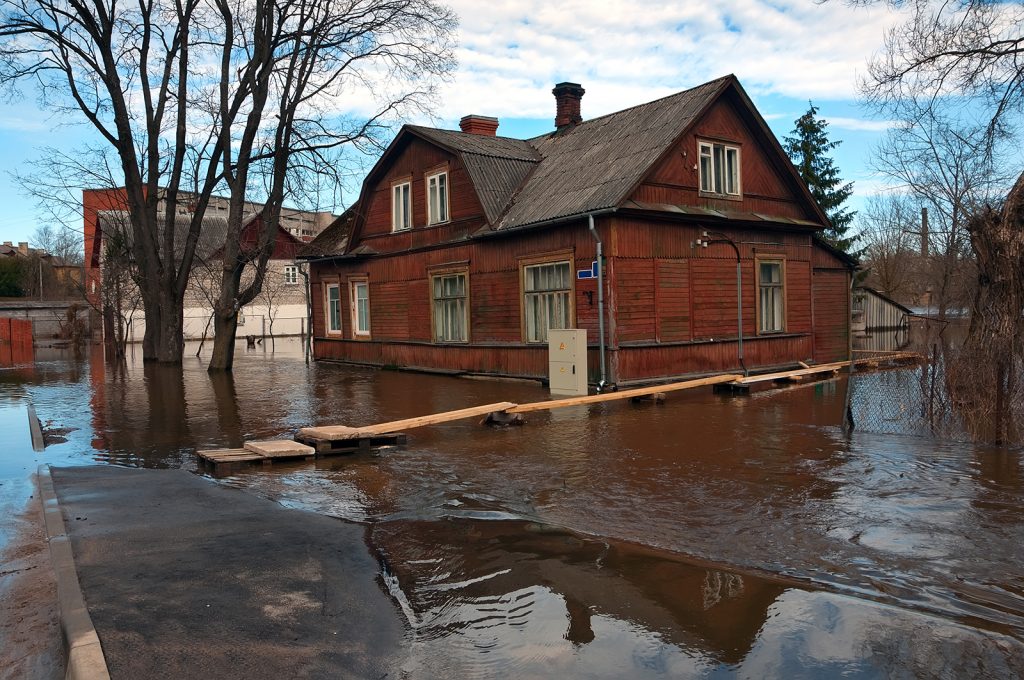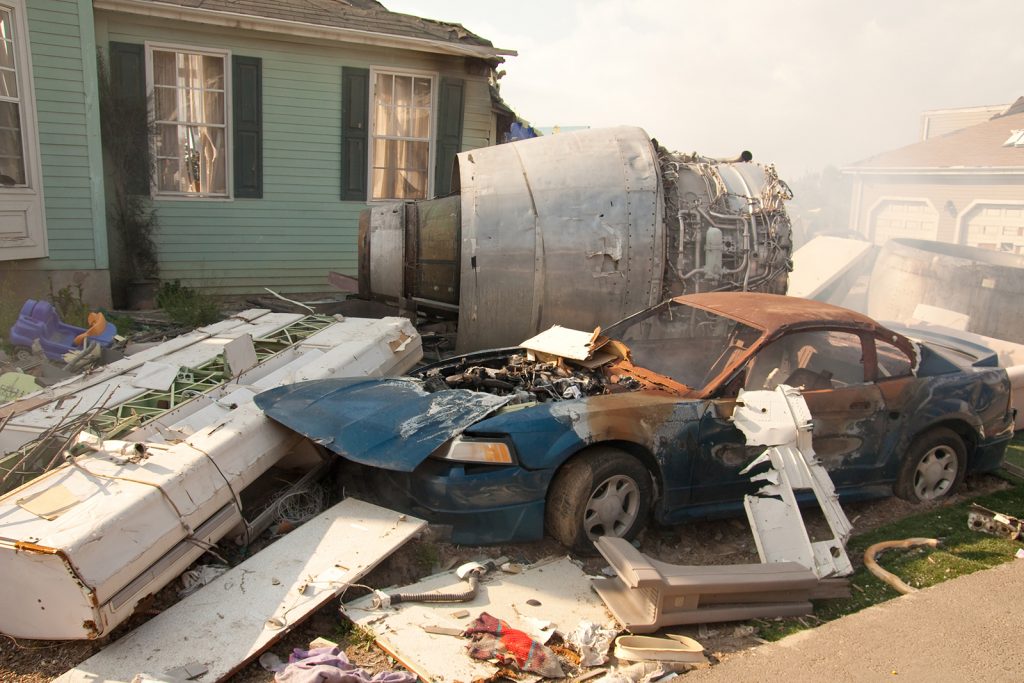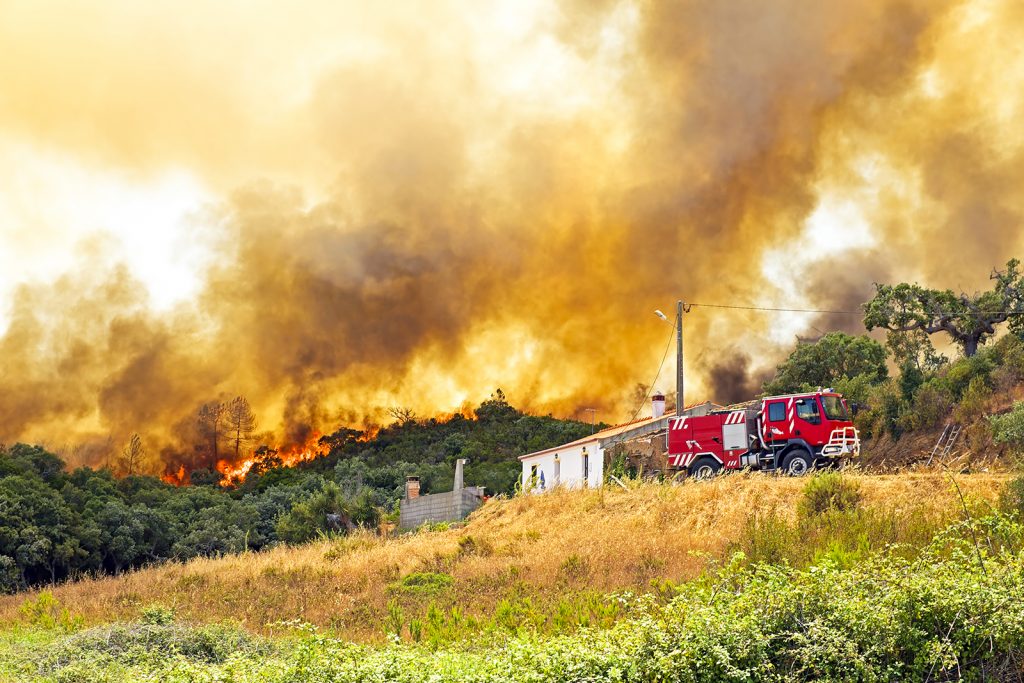Rule number one when it comes to disaster management – preparation beats the hell out of managing in the crisis. Now is the perfect time to start preparing while there is no critical emergency or natural disaster. When it comes to disaster preparedness I think about the Family, the Dwelling, the Environment, Critical Stuff and the Plan.
The Family
When it comes to the family, consider both your family and your client’s, immediate and extended. The same considerations and recommendations made for your client must also be considered for yourself and your family. Why? You cannot do an effective job of supporting your own client, if you are feeling unsettled at home. Is everyone evacuating or are some planning to stay? Is anyone mobility or travel challenged? Do we have anyone residing in an assisted living facility? Are we comfortable with the emergency or evacuation plans of the assisted living facility? Now is the time to understand those plans. If you live in areas that are prone to natural disasters (hurricanes, tornados, flooding etc.), the readiness plans of those facilities should be taken into consideration when determining long-term care for those in need. This avoids you later having to jeopardize yourself or other family members from making a decision during an actual crisis to try and recover a loved one. Has the family plan included the family pets? Even with the best of intentions the environmental conditions may render the area unreachable. During natural disasters, many municipalities often issue mandatory curfews so even an attempt rescue during restricted hours may make you subject to arrest.
The Dwelling
When it comes to natural disasters like hurricanes, most dwellings are compromised by wind, water or flying projectiles. Have you or your client installed permanent or temporary storm shutters, outer storm doors and windows? Is the dwelling itself secure (brick verses prefabricated homes or mobile homes etc.)? Is the structure itself strong enough to withstand hurricane force winds? If your concern is the potential for flooding does the property have a detention pond designed to temporarily hold water to assist in flood control, as it slowly drains elsewhere? Consider lowering the water levels in the swimming pool to allow it to catch any drainage runoff. Avoid lowering the levels too much as you may damage both the pool and the equipment. Don’t overly chlorinate the pool. If the power goes out, you should not put chlorine in the pool until the power is back on. Have you placed sand bags around the base of the structure to help divert moving water around the structure?
The Environment (Geography)
Is the area itself below sea level? For example, the average elevation of the City of New Orleans is between one and two feet below sea level. Some of the Eastern parts of New Orleans are as much as 7 feet below sea level. Is the home, office or other building of concern in a low-lying area or floodplain? Is the area heavily wooded with the potential for falling trees?
Critical Stuff
What is the plan for protecting important legal papers, family heirlooms, photos etc.? Will they be stored in plastic bags or containers in a safe deposit box or are you storing them in plastic bags and containers and taking them with you? Remember even if the plan is to store them in safe deposit box at the bank, what is the elevation of the banks structure, and is it prone to the same conditions you are evacuating from? If you are leaving them behind on an elevated level of the structure are they protected by a theft and/or fire rated safe? What is your plan to secure any firearms and ammo, work tools, business equipment etc.?
The Plan
As a trusted advisor, your personal decisions or recommendations to your client to stay or evacuate should not require governmental permission. While you may consider outside council in your decision-making process, it should not require a mayor, governor or weather man for you to consider evacuating during a Category 4 or 5 hurricane.
Also depending on the dwelling and potentially effected geography a Category 2 storm may produce enough water in some areas to cause catastrophic flooding. So, everyone’s individual situations should determine their individual, family or client’s tactics. If told to evacuate do so immediately. The longer you wait, the fewer options you have, supplies are reduced and travel is restricted and traffic often becomes a slow crawl, further adding to your stress and anxiety. Also evacuating does not always mean leaving the state.
Sometimes it just means going to a part of the city or county that is of higher elevation or protected by physical barriers. In states like Florida some of the modern high schools are designed from initial construction to be evacuation centers. I know first-hand from one of my family members who decided to evacuate to County identified shelter (modern high school) where classrooms were converted into sleeping quarters, the local municipal animal control shelters staffed the pet center within the shelter, and shelter residents had the ability to visit their pets 24 hours a day and they had makeshift runs for family members to walk their dogs. The shelter also served three hot meals a day, and was staffed by the local sheriff’s department and national guard for assistance if required. We have come a long way since hurricane Katrina. If you or your client’s municipality and local school board is not this forward thinking, now is the time to plant those seeds and make “go-forward” plans.
Whether the decision is made to evacuate or hunker down and ride the storm out, here are some of my top preparedness tips:
Securing the Structure
- Secure the outer dwelling – Shutter windows and doors and bring everything outside into your garage or house. Place sandbags around any low laying areas you are concerned about the potential for water penetration.
- Consider taking down dead or dying trees in advance of the storm, also think about how strong the root base is in relation to the trees canopy and will it survive the storm force winds or will the winds bring the tree down? It will be far cheaper to remove or trim the trees pre-hurricane and reduce potential damage to the structure and occupants than the often-inflated costs we see by tree removal companies following catastrophic storms.
Essential Personal Needs
- Water – Make sure you have enough water to drink for minimum of 7 days. That can be bottled, filtered or pre-emergency tap water. Remember even after the storm passes there normally is a delay in getting all systems restored and there are often boil water advisories implemented.
- Food – Make sure you have enough food for a minimum of 7 days – Protein bars and other packaged food are preferred.
- Ice – Start building your inventory now. Whether you purchase ice or package your own.
- Perishables first – Start using up your perishables first. In the event of an extended power outage you have less waste.
- Medication and Emergency First Aid Kit – Make sure to pack your medication and ask the doctor to write you a prescription for any short supplies should you need to travel out of town or there is a prolonged mandatory evacuation. Also consider over the counter medication for diarrhea, constipation or other traveler’s stomach concerns. As an example, if part of your food is military MRI’s your body may not be accustomed to the food, if your options are not part of your regular diet, your body may reject it.
- Wash Clothes – At least 5 – 7 days of clean clothes particularly undergarments.
- Hygiene and Sanitation Items – This is not only good for reducing personal odor, they also help reduce the spread of bacteria and infectious diseases.
Critical Supplies
- Emergency Communication – Fully charged cell phones, tablets, computers with back up batteries and chargers. Consider getting at least one solar powered charger. Two- way radios also make great communication tools.
- Plastic Sheet/Liner – Use this to line the tub. Then you can fill your tub with water without it leaking out. You can use this to flush the toilet and for basic cleaning if the water goes out.
- Zip Lock Bags – Buy large and small ones. You’ll use them to protect papers and other valuables. You should consider filing them 3/4 full of water and stuff the freezer full. Do that a minimum of 72 hours in advance to be sure they are frozen solid. If the power goes out they will keep your refrigerator or freezer colder.
- Portable battery-operated AM/FM Radio-this helps you stay in touch with weather alerts or other potential evacuation information particularly if there is a loss of power.
- Flashlights – Get LED flashlights and/or lanterns. They run longer on fewer batteries. Maintain a supply of extra batteries from AA, AAA, C, D, 9 Volt and 6 Volt Lantern.
- Large Plastic Bins – Use these for valuables(heirlooms), photos, papers and packaged food.
- Get plastic sheeting and plenty of duct tape – Use the sheeting and duct tape to help further seal windows and doors to keep out water and drafts.
- Fill up Vehicles – Fill all vehicles and check tires and fluid levels. If you are forced to evacuate understand fuel will be at a premium in the evacuating areas and as conditions deteriorate it may be awhile before the stations are resupplied.
- Cash Now – Get some cash now as the threat looms larger many ATMs will run out of cash and many banks may be closed. If retailers lose power you may lose the ability to use your credit or debit cards.
- Screen Shot Important Docs – screenshot & send to your email. Take originals with you.
- Up to Date Pet Records, Food and Portable Crate – If you are taking your dog with you or boarding them in a sheltered facility you will be required to produce up to date shot records and may have to provide your own travel crate or kennel.
Generators
Consider purchasing a backup generator for the house in advance of an emergency. Then make sure you keep a minimum of seven days fuel on hand. Even if you are evacuating, when you return there is no guarantee on how long it will take for power to be restored. One of the most important keys to reducing anxiety and depression following a major event, is getting the family’s life back to normalcy. If you have a Transfer Switch installed in the dwelling before an emergency occurs, in the event of an outage you can safely and efficiently run and connect your backup generator via the transfer switch, particularly handy when you want to power multiple rooms or appliances.
Also remember backup generators need to be run outside of the home, not inside of the dwelling.
- Medium Generators Powers: Survival appliances; Connections: Extension cords. Watts: 1,000 – 5,000; Tank Size: 3 – 8 gallons; Starter: Recoil or electric
- Large Generators Powers: Multiple rooms; Connections: Cords or switches. Watts: 6,000 – 8,000; Tank Size: 6 – 9 gallons; Starter: Recoil or electric.
- Extra Large Generators Powers: Small homes; Connections: Transfer switches. Watts: 10,000 – 17,000; Tank Size: 8 – 16 gallons; Starter: Electric.
Protective Gear
- Waterproof Protective Boots and Gear – You should make every effort to avoid having to traverse through standing water. For large storms expect sewage contamination from bacteria, human waste and other toxins in the water as well. During hurricane Harvey officials in Houston found e-coli levels as much as 135 times higher those considered safe.
- Firearms and Ammo – Secure all firearms and ammunition whether you are transporting them or storing them. All firearms with the exception of the ones you are carrying for your personal protection, should be stored in lockable dry storage bins or safes.
While the above considerations are not all inclusive they will give you a good start on helping you enhance your family’s or client’s safety and reduce exposure during an emergency or natural disaster.
Disaster Preparedness
By: Mark “Six” James
For additional safety tips visit www.pantherprotectionservices.com. Mark “Six” James is Founder and Executive Director of Panther Protection Services, LLC. He is an internationally published author, keynote speaker, security consultant to educational institutions and frequent contributor to a number of print, broadcast and online media, and the author of a number of security, firearm and protection publications. Panther Protection Services is a full-service protection agency focusing on Risk and Crisis Mitigation, Protective Services, Self-Defense Training, and Firearm Instruction.




Leave a Reply